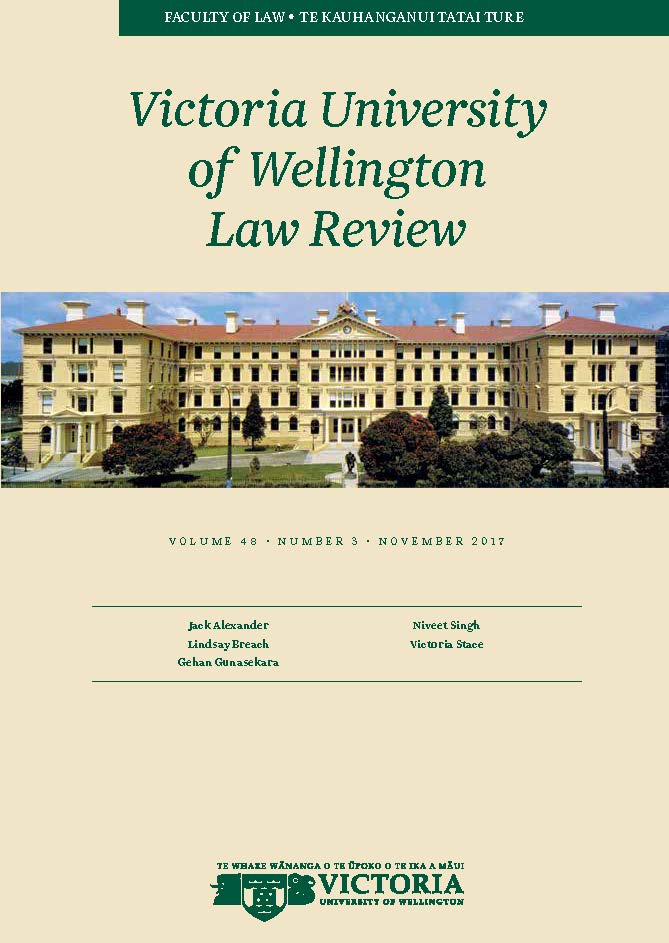Upping the Ante: New Actors and the Evolving Nature of Privacy Act Jurisprudence in New Zealand
DOI:
https://doi.org/10.26686/vuwlr.v48i3.4733Abstract
This article examines emerging trends in New Zealand's Privacy Act 1993 (the Act) litigation emanating from the Human Rights Review Tribunal (the Tribunal), which adjudicates cases brought under the Act. The Tribunal can award a range of remedies including damages, injunctions and declarations but in recent years it has also developed other remedies, such as training orders, aimed at remedying systemic privacy failures within agencies. The legitimacy of these is assessed against the backdrop of legislative lethargy in implementing parallel recommendations for law reform aimed at similar mischiefs. The article surveys all cases brought before the Tribunal (in its privacy jurisdiction) over a ten-year period from 2007 until 2016 inclusive. Brief comparison is made with Tribunal awards for discrimination under its non-privacy jurisdiction. The article also examines the reasons for a significant increase in the average amount of damages in recent years, especially in the Tribunals' privacy jurisdiction. Contributing factors to this include the changing nature of the types of dispute and the defendants involved as well as the discretion afforded to the Tribunal. Whilst the Tribunal has significantly modified its approach, other significant influences have included a recent increase in the number of private sector defendants. The Tribunal's substantive jurisprudence as to the nature of the obligations contained in the Act's privacy principles has also continued to evolve thereby vindicating New Zealand's principles-based data privacy regime.
Downloads
Downloads
Published
How to Cite
Issue
Section
License
Authors retain copyright in their work published in the Victoria University of Wellington Law Review.


